Messier 20: Trifid Nebula
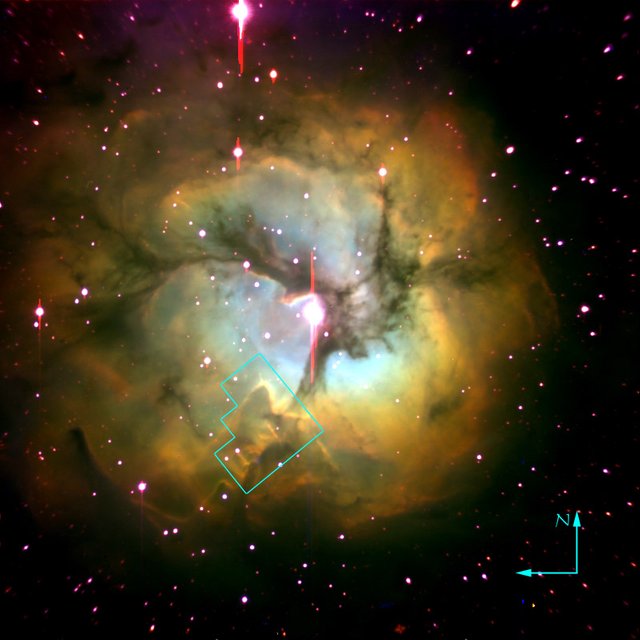
Trifid Nebula by the Hubble Space Telescope. Image credit: NASA/ESA
Although, surely, it is not the most spectacular nebula of all we know, if you have ever seen images of space you have probably come across the twentieth object of the Messier Catalog.
An incredible beauty and an unimaginable riot is presented to us in the Trifid Nebula. Also known as Messier 20. Energetic processes of star formation create not only colors but also chaos. The bright red gas is a result of high-energy starlight colliding with interstellar hydrogen gas. The dark dust filaments drawn by Messier 20 were created in the cool atmospheres of giant stars and in the debris of the supernova explosion.
Messier 20 was discovered by Charles Messier (1730-1817) in 1764, but it was the astronomer John Herschel (1792-1871) who, using more powerful telescopes, was able to study its true nature and describe it as a nebula. The presence of dark nebulae divided its interior into three sections, hence the name assigned to it.
The Trifid Nebula is especially atypical because it contains all kinds of nebula regions we know of. It is composed of an open cluster of stars, an emission nebula, a reflection nebula and a dark nebula (those black lines that appear to be seen in the emission nebula and give it that trifurcated appearance).
It is an extremely young nebula, has an estimated age of about 400,000 years, and is 5,200 light-years away from the Solar System, in the arm of the Milky Way Centaur. It is an active zone of formation of stars (that is to say, an HII region) and in its interior it harbors a cluster formed by some 3,100 stars. Of all of them, the most massive that has been formed so far is HD 164492A (it is an OIII type star) that has about 20 times the mass of the Sun.
More details here: Messier 20
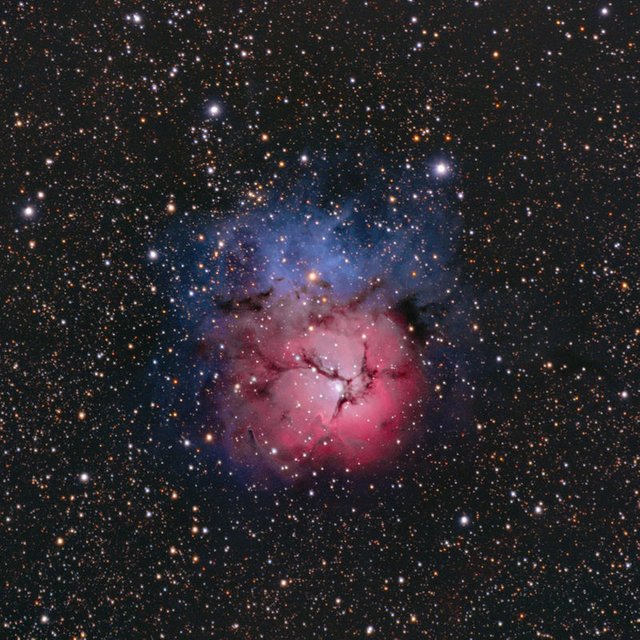
M20 with amateur telescope. Image source: [1]
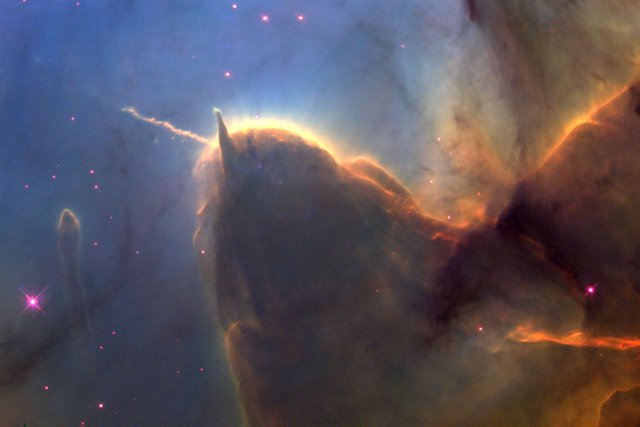
Hubble image, a closer detail of last. Image credit: NASA/ESA
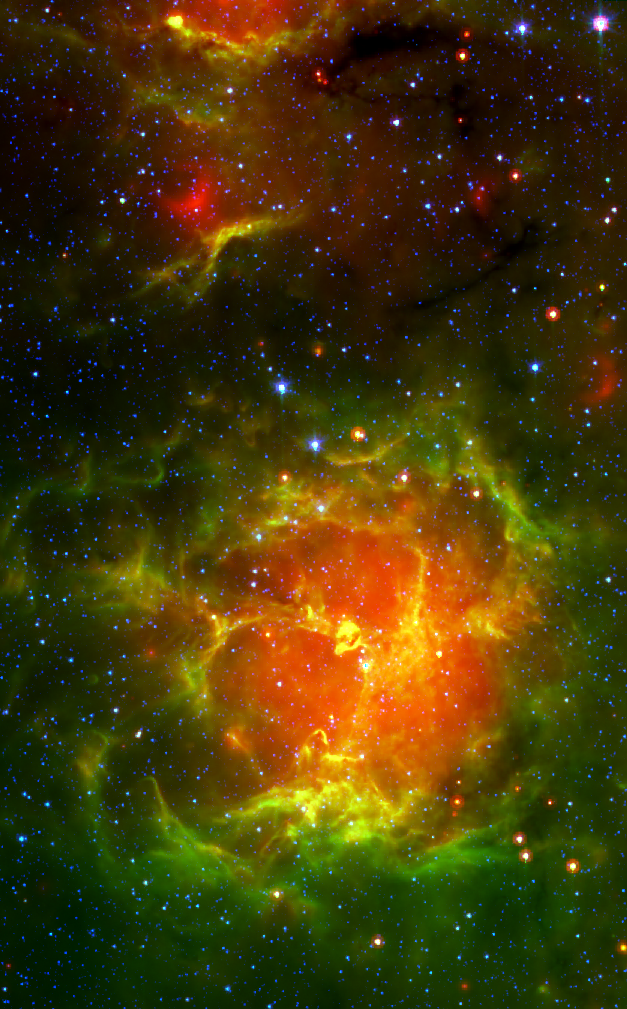
The Trifid Nebula in infrared as seen by the Spitzer Space Telescope. Image source: [2]
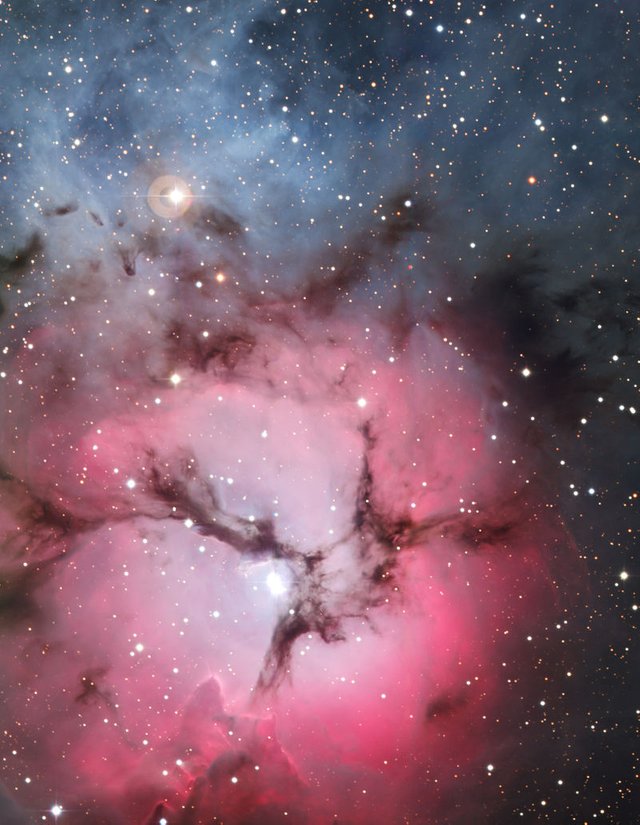
The Trifid Nebula is a rare combination of three nebulae types that reveal the fury of freshly formed stars and point to more star birth in the future. Image credit: ESO

The image of the stellar jet (your third image) is one of my favorites :)
nice
Amazing Views Images - Very Value Information.

Thank You That Is Shared : )
Nice! This post is more accurate than the one of spacehd...
great post